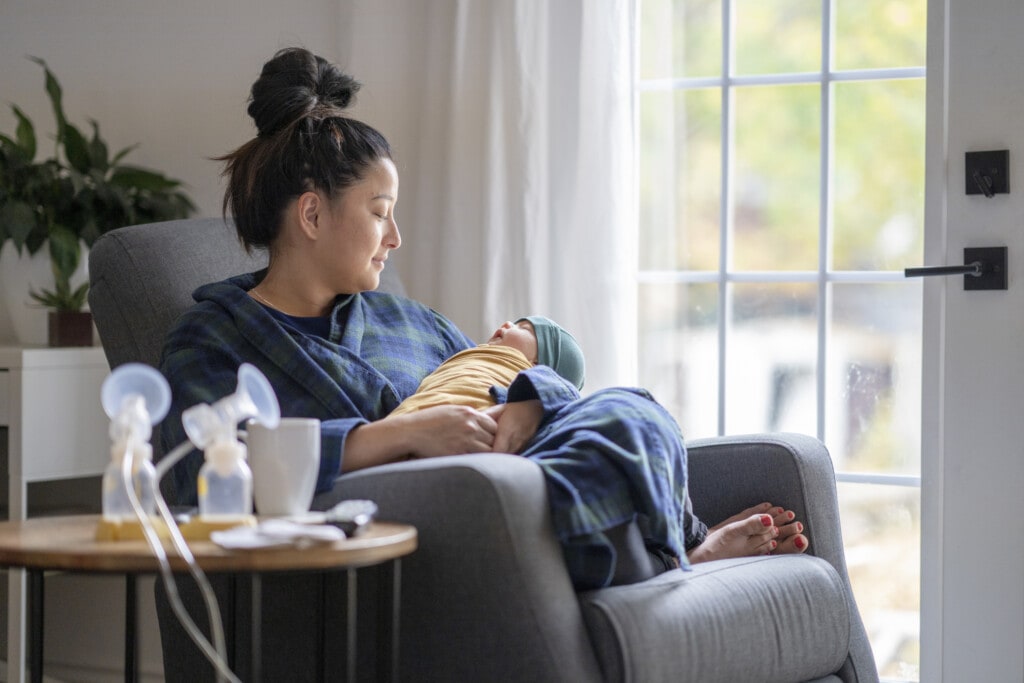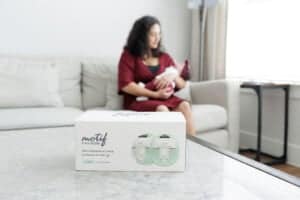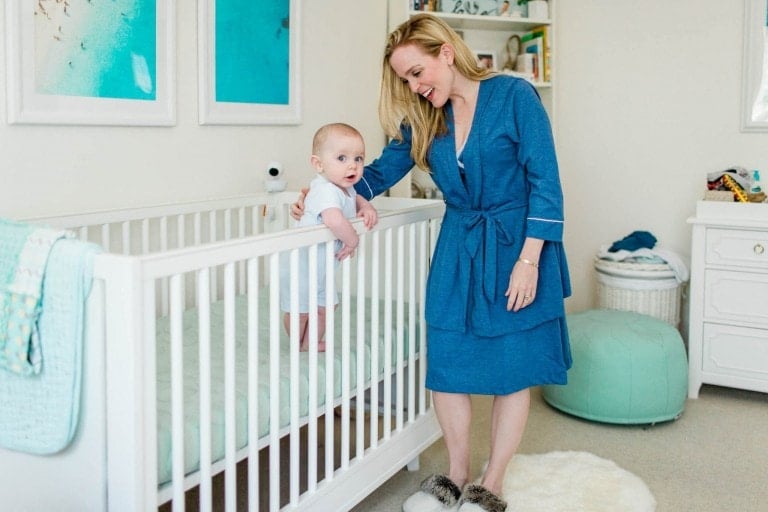When you take your breast pump out of the box, you will find many parts. Knowing what to do with these parts and pieces can be overwhelming. I often recommend my clients bring their breast pump with them to their first lactation appointment after delivery. As a lactation consultant, I often help mamas set up their pumps and show them how to use them properly. I also help them ensure their breast pump flange size fits correctly.
You will likely receive your breast pump during your pregnancy or shortly after birth. It doesn’t hurt to watch videos or read how to use your specific breast pump, as there are so many types. This can be a great way to prepare for postpartum. As you can imagine, a lot is on the to-do list once your precious little human arrives. Getting familiar with your pump ahead of time is not a waste of time.
Why Is an Appropriately Fitting Flange Necessary?
Having an appropriately fitting breast pump flange will ensure that pumping is not only comfortable but also effective. Believe it or not, having a flange that doesn’t fit properly can cause discomfort and nipple damage and may not correctly empty your breast of milk.
A breast pump flange is a funnel-shaped plastic piece that you will find in your box of goodies. It forms a vacuum seal around your breast and nipple to help create suction and empty your breasts when the pump is turned on. But how do you know what size breast flange is right for you? This guide will help your decision and make pumping easier and more productive.
How to Find the Right Breast Pump Flange for You
When determining the breast pump flange size that’s right for you, it’s important to note that we look at the diameter of the nipple — NOT the areola. Typically, your pump will come with 24mm and 28mm size flanges (although flange sizes range from 21mm to 36mm). On average, many mamas will use 24mm pump flanges. However, it is essential to remember that every mama is different. You may be more comfortable using smaller or larger flange sizes that are, of course, specific to the size of your nipples.
Take Precise Measurements
You’ll need a ruler or measuring tape to find what breast pump flange size you are. Sometimes, I recommend using clean coins to help measure your nipple. For example, a dime is about 18mm, a penny 19mm, a nickel is 21mm, and a quarter is 24mm.
You will want to measure the size of your nipple after your baby has finished breastfeeding or after stimulating your nipple. Your nipples will grow in size once stimulated. Don’t forget to measure both nipples, as you may find your nipples are different sizes. This, too, is a normal variation. It is important to measure at the base of the nipple. Don’t worry about the size of your areola when measuring breast pump flange size.
I always mention to my patients and clients after delivery to remember that breasts may be engorged or swollen from water retention. So, you may find your flange size changes throughout your nursing journey. I will also note that flange sizes vary among companies. Experimenting with brands or models may help improve comfort and the amount of milk pumped.
Make Sure You’re COMFY
You will know your breast flange sizes fit correctly by using the acronym COMFY:
C: Center of nipples move freely in and out of the center of the tunnel without pain or redness.
O: Only a little areola should be pulled into the center of the flange as well with each suction motion — not too much and not too little.
M: Motion of your breast is gentle and rhythmic, meaning your breasts should move back and forth every time your breast pump applies suction.
F: Feel comfortable during pumping sessions. There should be no discomfort, rubbing, or redness after pumping session is complete.
Y: Yields well-drained breasts and your breasts should feel softer and a bit lighter once you have completed your pumping session. If you find your breasts aren’t draining this could be a breast pump flange fit issue.
I always recommend following up with a lactation consultant after delivery, especially if you find pumping uncomfortable, with white or reddened nipples, yielding little to no milk, or overwhelming. Using your resources during your breastfeeding journey will be necessary for pumping and breastfeeding success! Also, knowing that you are not alone in this journey and leaning on friends who have been there is so helpful.












